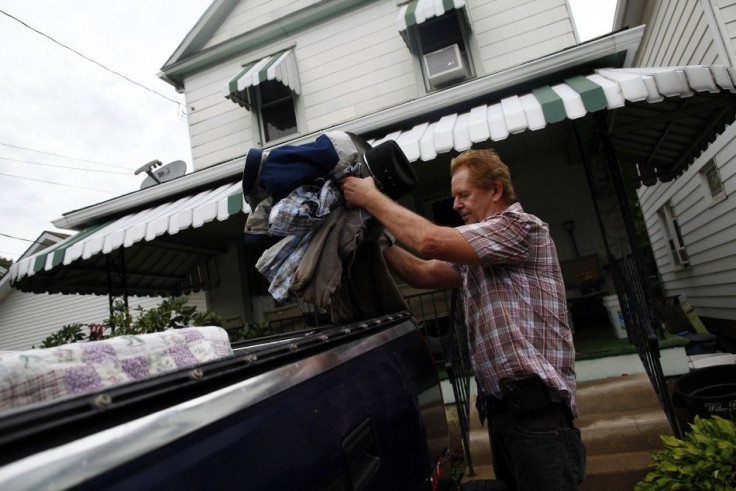Binghamton Mayor Says Record Flooding Situation is ‘Dire’ [PHOTOS]

Decades old flood walls were not match for the swelling waters of the Susquehanna River, which forced 20,000 locals to seek higher ground as heavy rain from the aftermath of Tropical Storm Lee pushes already swollen rivers higher.
The situation is dire, Binghamton Mayor Matt Ryan told The Associated Press. It's the worst flooding in the history of Binghamton at least since the flood walls were built in the 1930s and '40s.
Slow-moving Lee formed off the Louisiana coast late last week and gained strength while it stayed in the Gulf of Mexico for days. It dumped more than a foot of rain in New Orleans before moving onto Mississippi and Alabama.
Flood warnings have been issued for Pennsylvania and New Jersey, and a flood watch is in effect for Eastern New York. Heavy rains have swelled waterways from Maryland to New England, and have flooded highways and stretched the resources of emergency responders who are already dealing with cleanup efforts from Hurricane Irene's blow.
The National Weather Service has forecast that heavy rain would continue across the mid-Atlantic and Northeastern states through Thursday, dropping between 4 and 7 inches of rainfall. Up to 10 inches could fall in isolated pockets, according to NWS.
New York Gov. Andrew M. Cuomo has arrived in Binghamton to survey the damage. He has directed state emergency resources to the Southern Tier and surrounding counties.
Cuomo has also requested emergency and major disaster declarations from the federal government in response to the severe flash flooding and major flood conditions that have developed in portions of the Southern Tier, Southern Finger Lakes, Hudson Valley, Capital Region, Central New York and Southwestern Regions of the state, and other areas previously affected by Hurricane Irene.
Cuomo's office stated that within the last 24 hours, New York experienced another round of severe weather that rivals -- and may even exceed -- the devastation seen in previous flooding events, including the floods of 2006.
Communities in eastern and central New York, from the southern Adirondacks to the Pennsylvania border, struggling to clean up and rebuild after Irene, are facing another hit.
Since Wednesday, Tropical Storm Lee produced in excess of 10 inches of rain in some places on top of the rains dumped on New York State last week by Hurricane Irene.
Major flooding is expected to continue late into Thursday evening.
The Susquehanna River at Binghamton reached major flood stage on Wednesday morning and surpassed its record flood stage of 25 feet on Thursday morning.
Cuomo's office said the river is now at 25.3 feet and expected to crest at 26.2 feet by Thursday evening.
At Owego, the Susquehanna River's record flood stage was 32 feet -- it is already at 38 feet and expected to crest at near 40 feet later this evening.
There are growing concerns among officials regarding the Chenango River, the Unadilla River, the Oneida Creek and many other areas where flooding is also forecasted.
YNN reported that Cuomo said his top priorities are the health and safety of residents, and has made mention that citizens need to do their part so officials can continue to work.
You heard the areas that need evacuations, Cuomo said. If you are in an evacuation area, evacuate. As I said, it is going to get worse. It is going to get much higher. We have been through this before. By the time it looks that bad, you won't be able to leave. So leave and leave now.
At this time there are approximately 25,000 customers without electricity because of the persistent heavy rain, of which 21,600 are in NYSEG's Binghamton Division, where flooding has become a major problem.
© Copyright IBTimes 2024. All rights reserved.












